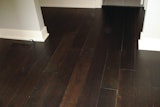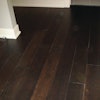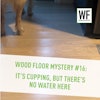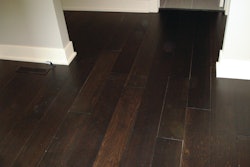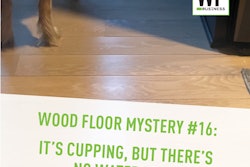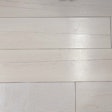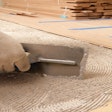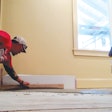The Problem
I received a call from an installer who had completed the installation, sanding and finishing of a ¾-by-2¼-inch staple-down beech floor. It had been cupped for several months; the homeowner had complained about the cupping of the wood approximately two months after the installation.
The Procedure
The installer delivered the wood to the Florida home for acclimation. Although he did not record his moisture readings prior to installation, he did moisture tests to affirm the floor was within four percentage points of the subfloor. The installer used the staple-down method over No. 15 roofing felt and completed the standard sand and finish procedures in accordance with industry standards.
The Cause
The floor displayed generalized cupping throughout, and the home's humidity was 69 percent. I used a pin-type meter to test the moisture in the hardwood and found moisture content between 9.7 and 12.1 percent throughout the floor. Moving underneath the home to test the subfloor moisture, I recorded readings between 13 and 18.6 percent, with crawlspace humidity at 73 percent—complete with mold and branch-type fungal growths hanging from the joists and subfloor.
Although the black plastic was rolled up the stem walls, it was not sealed and the edges were not taped. Adding to the funk was the fact that there was only 13.6 square feet of venting for a 1,900-square-foot home, and half of the vents were below-grade with inhibited air flow. With the sprinklers on, I noted that they sprayed against the house on one side and into the crawlspace on another side.
The homeowner stated that they did not operate the HVAC system during February and March—the same time that the cupping first occurred. The lack of the HVAC running combined with the crawlspace moisture, causing the permanently cupped floor.
How to Fix the Floor
According to NWFA guidelines, where inadequate crawlspace ventilation is available, the black plastic should be sealed to the stem walls, and the edges should be taped together. Mechanical ventilation with a humidity switch is also required to keep the moisture in the crawlspace controlled. The customer needs to agree to keep the HVAC system on year-round and not shut it off for two months at a time. The sprinklers need to not shoot under the house nor hit the sides. Once the installer and the homeowner implement these fixes and the floor stabilizes, the floor may be able to be resanded and finished.
In the Future
When purchasing a wood floor, a homeowner needs to understand the climate requirements before, during and after installation. The installer admitted to not thinking the crawlspace was an issue because the customer told him the old wood floor he was replacing never had a problem. Even so, the installer had taken the precaution of putting the plastic under the home for the first time.
Simply following the NWFA Installation Guidelines would have prevented all of the problems on this job. By ensuring that proper ventilation existed under the home, the greatest source of moisture in the home would have been eliminated before the installation. The customer played her own role in the problem by installing the sprinklers and turning off the HVAC system.
It pays to check the environment and have the customer sign off on a pre-installation checklist identifying all major concerns and required fixes. Relying on the customer to tell the truth is another foolhardy way to buy a job, along with assuming that they know what they are talking about. Properly educating every consumer is the duty—and best defense—of any responsible retailer or contractor.










